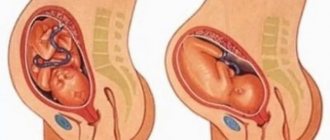Ailurophobia (fear of cats and cats) is a specific disorder that occurs against the background of psychological trauma associated with these animals. This is a fear of cats and cats. There are people who simply don't like them, preferring dogs or other animals. We can talk about a phobia when the reaction to a cat is uncontrollable and causes real panic. Let's look at the causes of ailurophobia.
Ailurophobia: what is it?
What is ailurophobia? Ailurophobia is the fear of cats, cats and kittens. A person is seized with panic when approaching an animal, at one glance at it or a photograph of a cat. The only safe place for an ailurophobe is his home. On the street, a meeting with an object of fear lurks at every corner.
What frightens a person suffering from ailurophobia:
- direct contact with the animal;
- the direct gaze of an animal directed at a person;
- movement of an animal towards a person;
- a cat touching a person;
- type of wool;
- recording of a cat's purring, meowing;
- the prospect of stumbling upon an animal in the dark.
A person is afraid that the animal will infect him with infections and parasites, bite or scratch him, or cause serious injuries.
This is interesting! All people of any age are susceptible to a fear of cats. But the problem is that childhood trauma can manifest itself as a phobia in adulthood, that is, it can be delayed.
Dictators and cats
One of the most famous ailurophobes was Napoleon Bonaparte. Contemporaries said that he could defeat a lion, but he would always be defeated in front of a cat. When he saw them, he had real panic attacks.
His fear was caused by the fact that as a child a cat jumped on him and scared the future French emperor.
Benito Mussolini, Lavrentiy Beria and Alexander the Great were also afraid of cats. So this phobia is not as “shameful” as many ailurophobes think.
Causes of phobia of fear of cats
Phobias are a defense mechanism of the psyche in response to psychological trauma. There are several reasons for the development of ailurophobia. Let's take a closer look at them.
Contact with aggressive animals
Most often this happens in childhood. Children do not yet know how to communicate with animals, and therefore may be bitten or scratched. Or the child may be attacked by a street animal. Such contact with an aggressive animal turns into trauma. One small scratch and severe fright may be enough to cause injury.
Parental warnings
Some parents intimidate their children with horror stories about cat attacks, the likelihood of getting a fatal infection from an animal's claws, etc. Or after a bite they scold the child. The situation is aggravated if, after an animal attack, the child had to endure many unpleasant medical procedures.
Fear after watching a movie
The film Pet Sematary is based on the book by Stephen King. If this picture is seen by a child or a person with an unstable, weak psyche, he may develop a phobia. The aggressiveness and danger of cats is shown not only in this film; any such picture can cause psychological trauma.
Superstition
A black cat crossed the road - unfortunately. A cat sneezes means toothache. If you don’t take a cat on the road, there will be no way. These and many other superstitions prevent people from communicating with animals. It is strange that superstitious people do not notice many positive signs:
- A black cat on the porch means prosperity in the house.
- A three-haired pet means money and happiness.
- Blue-eyed cat - from enemies.
It is likely that superstition as a cause of phobia is usually combined with other factors, such as personal trauma.
Large breeds
Most people are afraid of big cats, this is an echo of the primitive. Lions and tigers are predators. These are dangerous and scary animals that are larger and stronger than humans. Some people's fear of large breeds transfers to small cats.
Fear of diseases
Cats, especially wild and stray cats, can carry a number of dangerous infections, such as toxoplasmosis. One small scratch will be enough to cause infection. And if a pregnant woman becomes infected with this infection, there is a risk of abnormal development of the fetus and mutations.
Allergic reactions
Allergies are accompanied by swelling, redness of the skin, runny nose, coughing, sneezing and other unpleasant symptoms. Without treatment, another allergy attack can cause serious harm to your health. In this case, avoidance of animals is associated with the instinct of self-preservation.
Increased emotional sensitivity
Impressionable, suspicious people with a developed imagination can get a phobia after someone’s story about an animal attack or after watching similar news.
Fear of unpleasant consequences
For impressionable and suspicious people, the mere idea that they will be scratched by a feline will be enough. Expectations of negativity are usually combined with other factors. This is usually preceded by personal negative experience with cats or someone’s story about the danger of the animal.
Parting with a beloved pet
The death or loss of a beloved pet is traumatic. In the future, the person prefers to avoid cats so as not to become attached and again experience the pain of separation.
Mysterious behavior
In some religions and cultures, the cat is considered a sacred and mystical creature. In addition, there is a widespread belief that black cats relate to black magic. These superstitions and belief in esotericism, magic, and mysticism make us wary of cats. Most often, black cats are feared for this reason.
A person is afraid of cats: how to understand
This phobia manifests itself in different ways, so it is not immediately possible to recognize it. With a mild form of the disorder, others may not notice the deviations. Such a person is no different from ordinary people. His behavior changes only when a cat appears.
Scared by a cat
There are signs by which we can suspect a friend has a fear of cats:
- When asked to come visit, he will ask if there is a cat in the house. And if yes, then he refuses the invitation.
- He avoids contact with the cat - he does not allow it to approach him or pushes it away.
- The person gets nervous and constantly looks around if he hears meowing.
- He reacts unnaturally to the appearance of an animal in his field of vision or to its image: his facial expression changes, he turns pale or red.
Symptoms of cat fear and their diagnosis
Symptoms can be divided into physical and psychological. The latter include avoidance of the object of fear, anxiety at the mere thought of cats, an excited state, and panic attacks.
Autonomic symptoms:
- increased sweating;
- cardiopalmus;
- high blood pressure;
- nausea;
- chills;
- general weakness;
- dizziness;
- headache;
- chills;
- other individual reactions.
The course of ailurophobia is individual; during diagnosis it is necessary to identify the severity of anxiety.
When diagnosing, it is worth paying attention to characteristic changes in personality behavior:
- General weakness, deterioration in general health. A fearful person turns red or pale, his limbs freeze, his blood pressure drops or rises, and his heartbeat slows or increases. Depending on the strength of the fear, the list of symptoms expands and their severity intensifies.
- Fear of leaving the house. On the street, at every step you can meet a stray cat; most people also have representatives of this species living in their homes. These facts force a person to isolate himself within the four walls of his home.
- Avoidance of specific places. This category includes those places where a person has already encountered cats. Or those places where the likelihood of encountering animals is higher, for example, in a market square or in specialized cafes.
- Reluctance to visit people who have cats. This factor limits a person’s social activity and can deprive him of friends and acquaintances.
- Fear of toys, photographs, drawings depicting cats. This specific behavior is observed in advanced stages of ailurophobia.
This is interesting! In ICD-10, fear of cats does not have a special code; it is classified as a specific (isolated) phobia, code F40.2.
Ailurophobia test
There is no specific test for identifying fear of cats. But in the diagnostic process, any tests for identifying anxiety disorders and phobias as such, for example, the Zang scale, can be used.
Treatment of phobias in medicine
The KORSAKOV clinic employs highly qualified psychiatrists, psychotherapists and clinical psychologists who have been successfully fighting phobias and various mental disorders in people of different age categories for many years.
Treatment at the clinic is carried out anonymously; patients are not registered. Therapy for each patient is selected individually, taking into account all the features of the course of the disease and the intensity of symptoms.
Treatment of phobias is carried out in a 24-hour psychiatric hospital, in a day hospital, on an outpatient basis, or at the patient’s home. The clinic has all the conditions for accurate diagnosis and effective treatment of patients with mental disorders. Upon completion of the course of therapy, patients may be recommended medical and social rehabilitation in a special rehabilitation center to consolidate the results obtained.
The cost of services at the medical center is fixed. The clinic operates 24 hours a day, seven days a week. You can get specialist advice, call a doctor at home and make an appointment with a doctor by calling the hotline. Don't wait for the situation to get worse! We know how to restore your peace and joy in life.
How to get rid of ailurophobia
Constant tension and anticipation of an attack leads to psychophysiological exhaustion. Therefore, it is important to control the fear of cats independently and with the help of a specialist.
Self-treatment of ailurophobia
To combat ailurophobia on your own, follow this plan:
- Admit the problem. There is no need to be ashamed or hide the problem.
- At the time of an attack, look for rational arguments, for example, remind that vaccinated pets are safe. They are smaller than humans and protected from disease. If the animal is not angry, it will not attack. Attack is defense. This is how animals behave in situations of stress, when they themselves are frightened.
- Read a number of scientific studies about how cats help treat diseases and the psychotherapeutic effect they have. In psychology, therapy with pets is called pet therapy. This method is used in child and developmental psychology.
- Read stories about how cats predicted natural disasters or how they looked after small children. If a person treats an animal well, then the animal responds with warmth and love.
- Start approaching your fear: photos, cats of friends, cats in a shelter, your pet.
It is important! If you are allergic to cats, you should always have medicine prescribed by your doctor on hand. In this case, you really shouldn’t have a pet, but you shouldn’t be afraid of meeting an irritant.
Treatment of ailurophobia by a psychologist
Treatment uses psychotherapy and, if necessary, medication. Antipsychotics and sedatives may be prescribed. They regulate the functioning of the psyche, as a result of which anxiety is reduced and panic attacks are stopped.
In psychotherapy, it is important to take an individual approach. During the conversation, the psychologist determines the individual prerequisites for the development of a phobia and selects the optimal treatment methods. Hypnosis and cognitive behavioral psychotherapy have a positive effect in treating fears. During treatment, destructive attitudes and behavior patterns are identified and replaced with constructive patterns.
It is important! For healing, it is necessary to find the root cause of fear and work with this attitude, memories, sensations. This is the only way to qualitatively and permanently part with the phobia.
Some interesting facts about ailurophobia
History has shown that ailurophobia is a fear that has been around for a long time. Such famous personalities as suffered from it:
- Mussolini;
- Napoleon Bonaparte;
- Adolf Gitler;
- Genghis Khan;
- Julius Caesar;
- Alexander the Great.
Despite their fame, these people did not hide their fear of such a cute animal. Therefore, there is no need to be ashamed of your phobias. They need to be recognized and, if necessary, seek help from specialists. After all, this is the first step on the path to recovery.
Topic: Mental health, Overcoming fears
Consequences of cat phobia
Phobia fear of cats is highly treatable. But the prognosis depends on the stage of development of the phobia:
- A person experiences fear when approaching a cat.
- A person experiences fear as soon as an animal comes into view.
- Fear seizes at the mere mention of an animal, a person is in constant anticipation. It seems to him that the animal is about to jump out from somewhere and cause harm. This is a stage close to hysteria and delirium.
Vegetative symptoms also worsen. The physical consequences of a phobia include gastrointestinal diseases, heart disease, breathing problems, etc. From a psychological point of view, consequences include disorientation and desocialization.
Somatic symptoms may be the following:
- increased sweating;
- an increase or decrease in blood pressure, causing redness or paleness of the skin;
- hot flashes or chills;
- muscle weakness, tremor;
- dry mouth;
- labored breathing;
- tachycardia and arrhythmia;
- headache, dizziness, loss of balance;
- nausea;
- lightheadedness and fainting;
- other individual reactions.
The severity of symptoms can vary in intensity. Severe fear can even cause a heart attack. These symptoms most often appear during contact with the object of the phobia itself – cats. But if attacks of fear occur constantly, this threatens the development of serious health problems, such as: disturbances in the digestive system (ulcers, colitis), heart failure, hypertension.
Causes of Gatophobia
At first glance, the average person's fear of cats, cute and fluffy creatures, seems absurd and funny .
But such fear actually exists and is not something new; many are afraid of cats just as some individuals are afraid of, for example, dogs, which is common.
There are a number of possible explanations for the fear of cats:
- A common trigger for ailuphobia is observing other people's fearful reactions to cats. A child may develop this fear by watching their parent or caregiver (or even cartoon characters on TV shows) behave strangely towards felines.
- Women are known to acquire gatophobia by watching TV shows or movies where female characters typically show fear by jumping on a chair or running away to avoid cats. This notion is further strengthened by the fact that the masculine nature is shown to protect her from the animal.
- Felines are predatory by nature . They were often associated with witchcraft, folklore, and evil. Even tame cats may growl, hiss, or scratch. By observing this behavior of an animal, a child (or even an adult) directly or indirectly leads himself to this phobia.
- Killing or harming felines is considered a punishable offense in many cultures, especially among the ancient Egyptians, where cats were revered and mummified or preserved. Such religious sentiments can also lead to a fear of cats, especially in the minds of people who are already experiencing a crisis or who are naturally highly anxious or overly anxious.
- Childhood traumas are often the causes of phobias. An animal in an aggressive state can cause great harm to a child who, through negligence, hurt or tormented the cat.
Fear of cats can be identified by the following symptoms that accompany the phobia.











